
Putting Scales To Work
As you know, scales are simply a sequence of notes played one at a time. And one of the first scales you learn is the Major scale, shown below in the key of G over two octaves.

And you should know that scales are not key dependent. The same pattern you use to play the Major scale can be moved into any key, anywhere on the fret board. It remains the Major scale regardless of where you play it. The only thing that changes is the key, the "home base", the root, of the scale.
Bass parts must be focused on creating a solid rhythm figure in support of the harmonic and melodic structure of a song. Most Bass parts are mono-tonic, played one note at a time. Poly-phonic applications are employed more for accents than as a stylistic approach. Because there are multiple instruments in the rhythm section beyond Bass and Drums, like a Piano or Guitar, even Horns, Bass players hold down the "bottom". Therefore, in such situations a good Bass part is clean, uncluttered, and responsive to the melodic and rhythmic elements of a song.
What we'll be doing in this lesson is combining the use of scales and chords together to create a flowing part. And, because it works so well as a template for learning, we'll be returning to the A section of Autumn Leaves. So, for the sake of a bit of review, let's look at the basic Autumn Leaves part you learned way back in Lesson One.
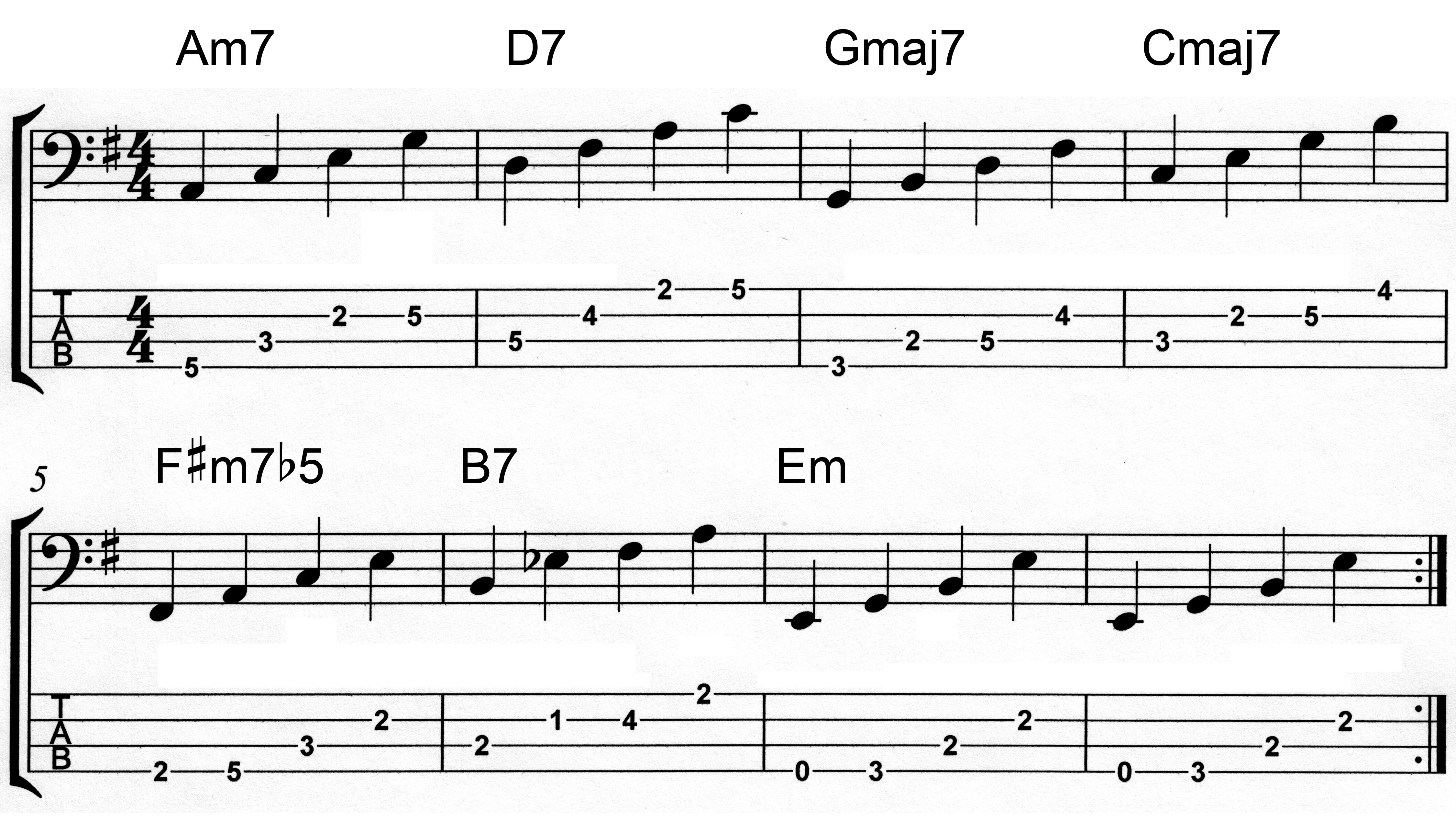
Now let's start to work this thing out. The first thing you want to do is establish the key of the song. The chart shows we have an F# in the key signature. Looking at the Circle Of Fifths (here) we see it tells us the key is G Major. -- Yes, we can also see on the minor Circle that it could easily be E minor, but if you follow the standard II V I model, the Am7 is the II chord. So while it technically resolves to the E minor chord at the end of the "A section", we are going to stay with the Major designation for now to keep it simple.
Now, the next chart shows the use of the G Major scale in place of the D7 and Cmaj7 chords to create a part that flows to avoid "jumping" to the next chord root tone to begin that sequence of four notes. We are connecting chords by "playing through" these chords using the G Major scale, but still outlining the essential tones of the chords we're "replacing".
Play through this new interpretation and think about what you're doing, why it works.
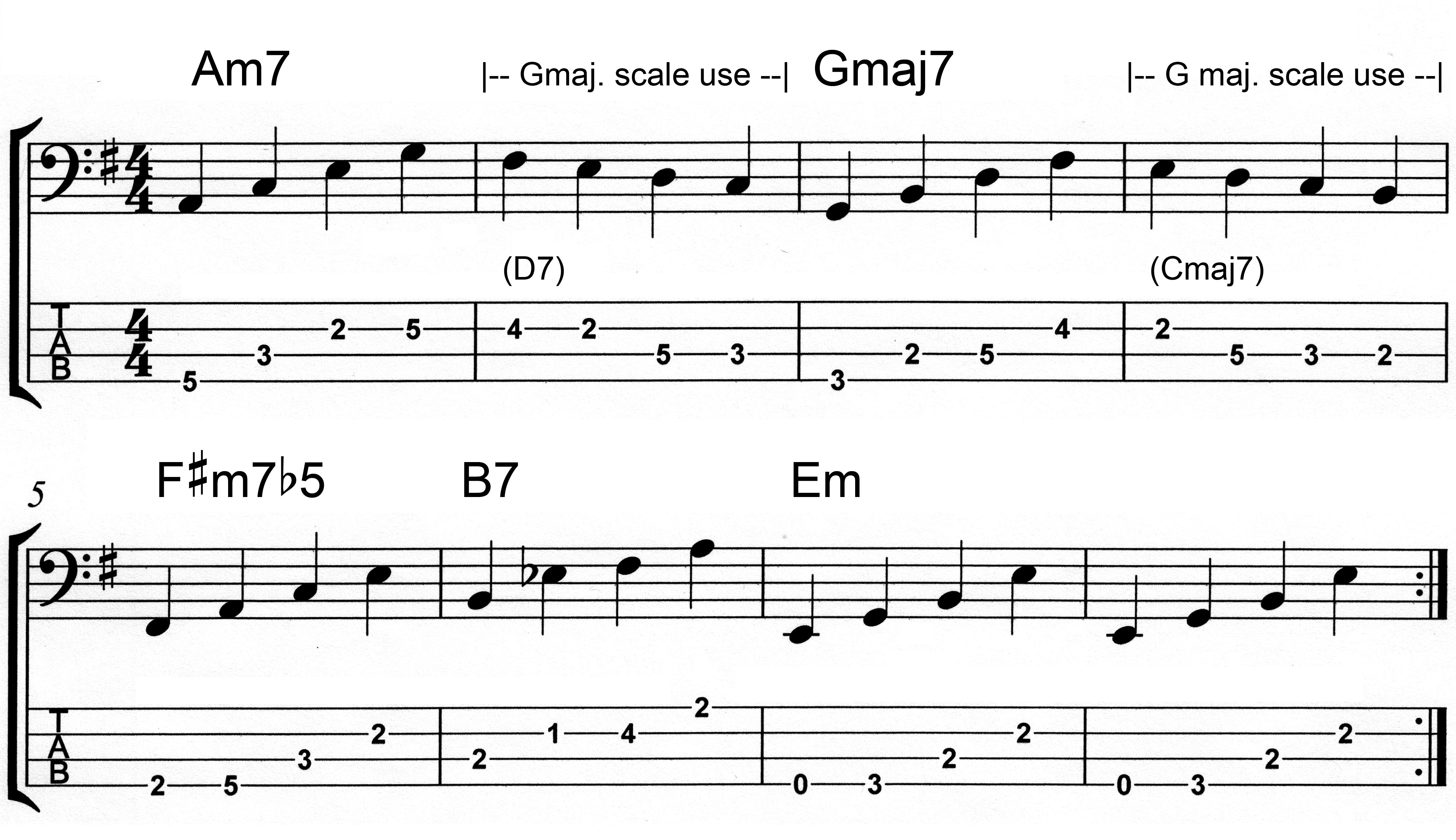
Okay, you've played the new part. Why does it work? What are you playing that makes it sound right?
The following chart shows you exactly why it works.
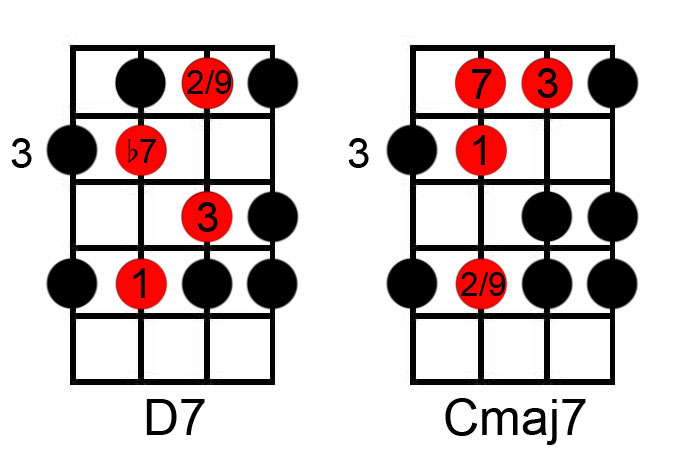
When you overlay the D7 and Cmaj7 chord tones on top of the G Major scale, you see exactly why it works. All the notes you're playing are literally part of the G Major scale. Yes, we have some notes that aren't technically part of either chord. But the substitution rule applies here. We're simply adding further dominant and Major information to each of the two chords. The chords still remain dominant and Major in nature; we're just changing their character a bit. On the D7, we're simply making it a D9, adding the 9 tone; and the Cmaj7 is also altered to being a Cmaj9 with the addition of the 9 tone.
In this way we are combining chord arpeggios and scale runs to create a more natural sounding bass part. You can literally go nuts with this stuff, and in some cases it is encouraged. But you have to be careful not to go too far afield from the intent of the song, and your place in the song. If you do wander too far off, the song could stop flowing, lose cohesion and begin to fall apart and sound unpleasantly dissonant and uncomfortable in all the worst ways!
I encourage you to experiment with this and all songs - if only to see what's possible, not what you should do. From this exploration you can figure out what to settle on, what the song accepts as workable. Of course, some songs demand you play things a certain way. In those cases, stick with the program. But where you can take license to improvise or rewrite a part, during your practice time, take the time to see what might actually work as an alternative to what's written.
Okay, let's move onto a different tune. Here is A Foggy Day, another easy going song, in the key of F Major. First, a rather basic approach:
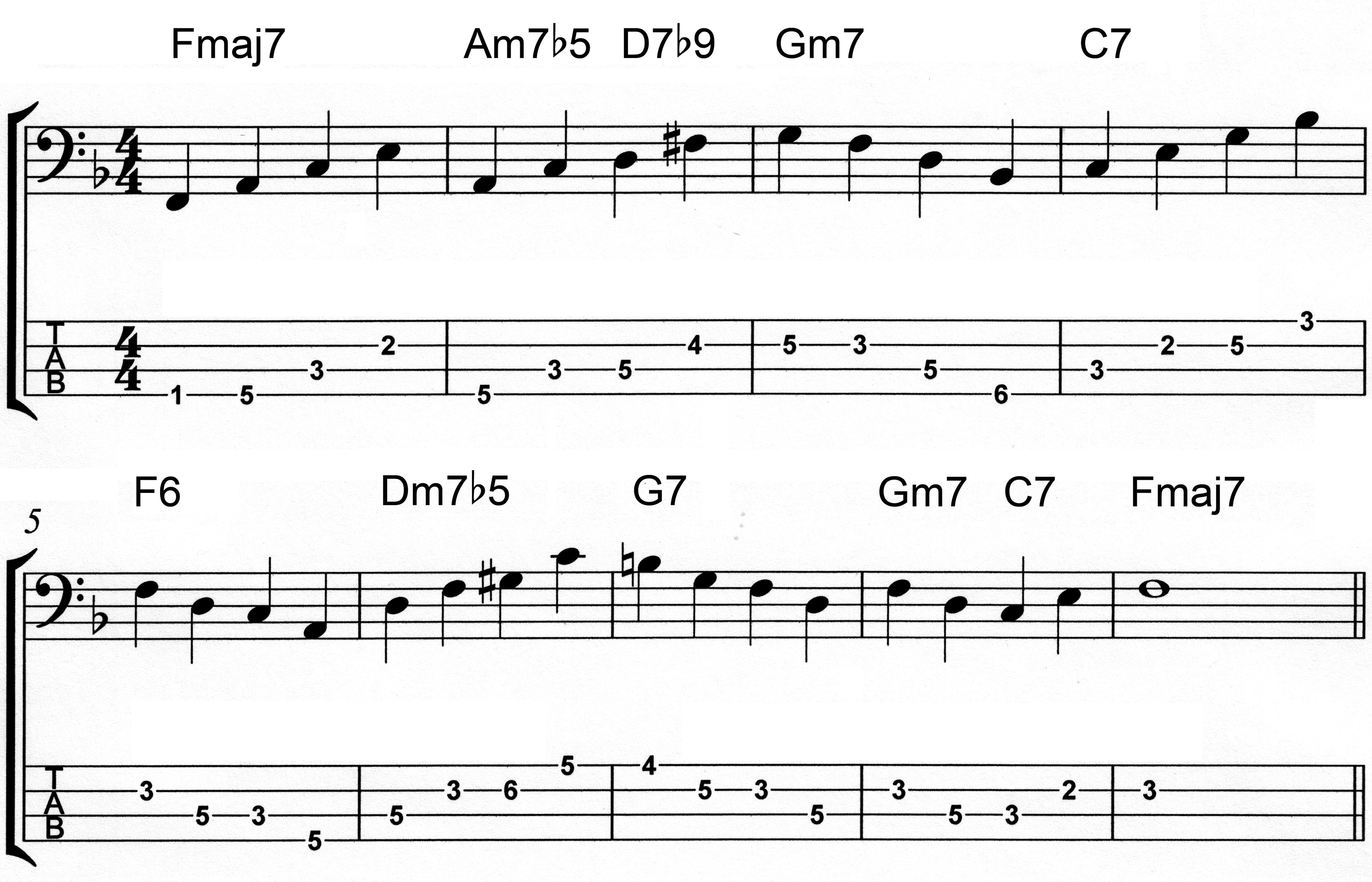
Bear in mind, if you're just getting comfortable with a song, it is best to simply frame the chord structures you're playing with, to play through them in a basic way to get a sense of the flow. Become comfortable with what the song is doing - listen to the song before modifying anything. There are times when "play it straight" is the best approach you can take!
Notice that on a few of the chords we actually played backward through the chord. This is very common and can be very practical, even useful when a scalar transition is not really going to work. This can help create a cyclical flow, which is to say that we create a kind of up and down wave of notes, rising and falling, low to high and high to low in pitch (thus the 'cyclical' term).
Okay, so you've played through this a couple times. Now to make some changes to help your part flow better. You may have noticed a bit of jumping around that doesn't feel particularly natural in the above example. That was a little intentional, to show how even playing rudimentary structures can be very difficult (and yet, sometimes this can be quite appropriate) to execute. This is why we modify things, to make them play better, even flow better, not just to sound better.
Look at this next chart of the same 8 bars. Note the difference.
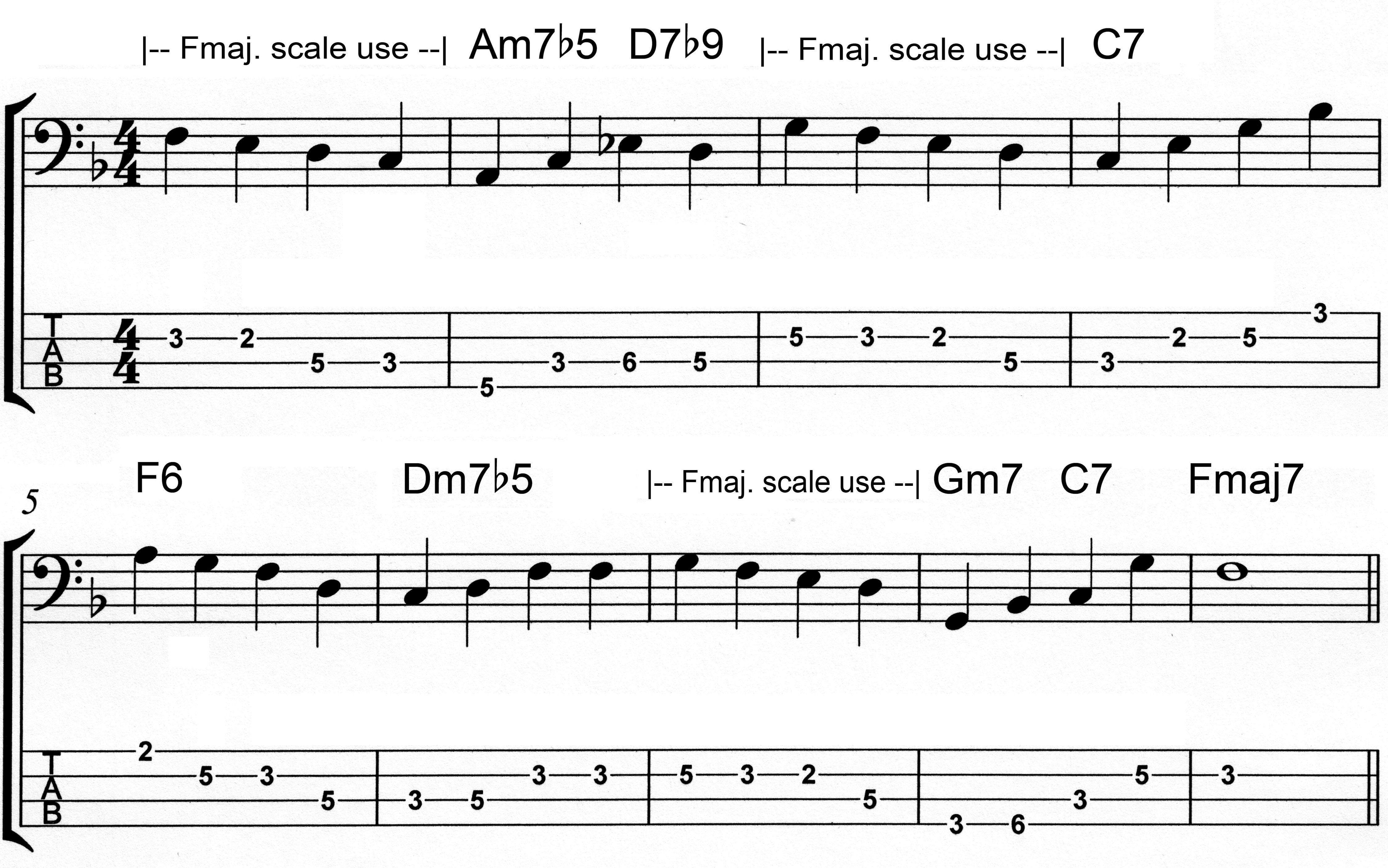
Now, while there is not a lot of use of the F Major scale here, remember, this is just an example of how you can apply this. Sometimes you want to use a minimalist approach when modifying things.
The same principles apply as to why the scale works over the chords. The notes being
played in the scale run will be compatible with the chord they are replacing. Therefore, you can also include extensions, such as the 9, 11, and 13 tones of a given chord, natural or altered in nature,
as they apply to the scale-to-chord compatibility you are employing. Take the time to look at the chart and how the scalar use plays through chord forms using the scale. Look at the chord tones the scale covers for each
chord. This is how it plays out:
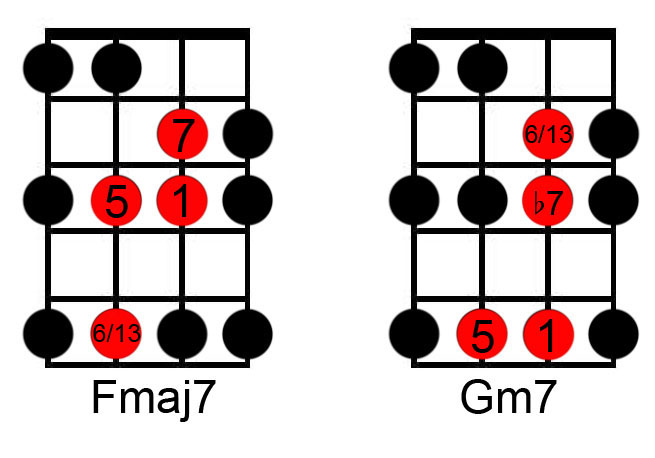
Again, overlaying the Fmaj7 and Gm7 chord tones on top of the F Major scale show the notes work because the scale contains the notes of the chords being played.
Okay, one last example. Now for this tune, Fly Me To The Moon, we're going to use the scale in a more real world context to illustrate how it can work if you apply scales with common sense. With a little tweaking, any song can be made 'better'.
Okay, first an easy approach to the first eight bars, here presented in the key of G, working on the basis that the progression that kicks this off is a II V I. Resolving to the I7 indicates a
Mixolydian flavour (basically a Major scale with a flatted 7 tone).
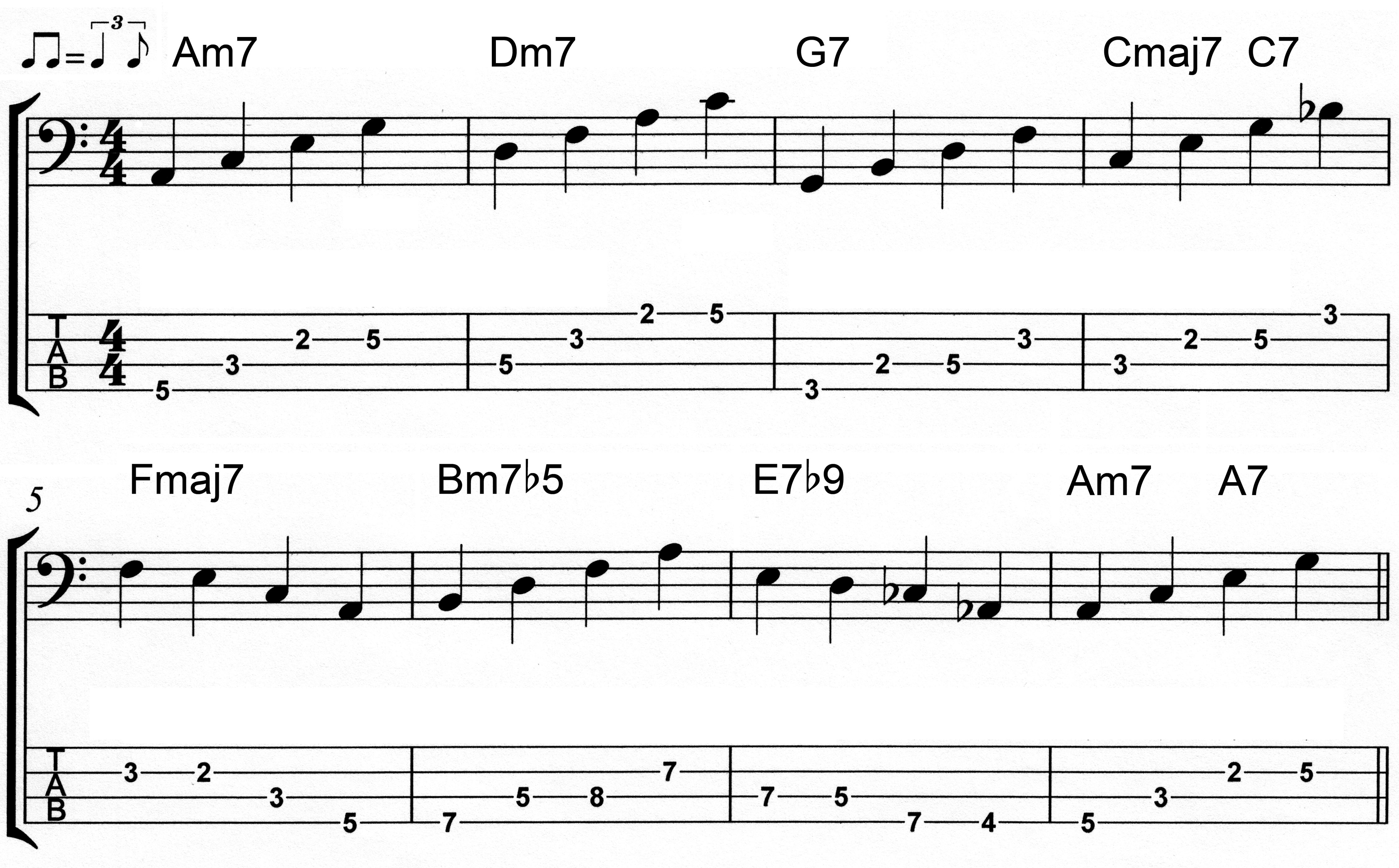
Pretty straightforward and with no surprises. Now let's add the scale elements. For most of this, we'll be playing positionally to the G root.
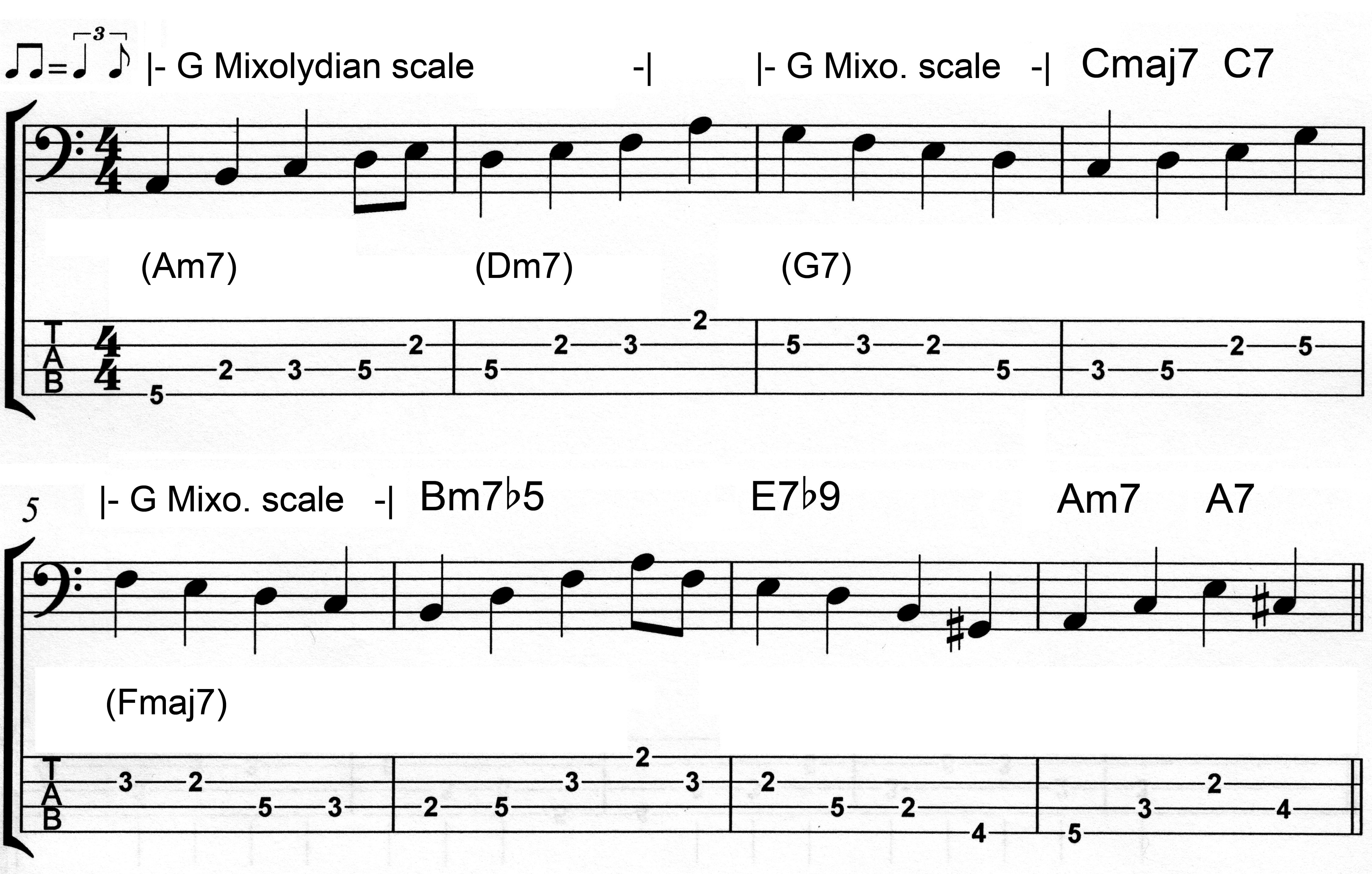
The beauty of combining scales and chord tones is that you have a whole lot of freedom to craft a really solid arrangement that can be tweaked and altered as the mood - and the arrangement - is modified by substitutions or other musical elements that can be applied, particularly during instrumental passages where you get a little more license to "play" with the tune.
Okay, so here, again, is a diagram to show you why it all works so well. You should be starting to get this loud and clear now. If not, just work your way through this lesson a few times and analyze what is happening in
the modified examples where the scale is introduced as part of what you can play.
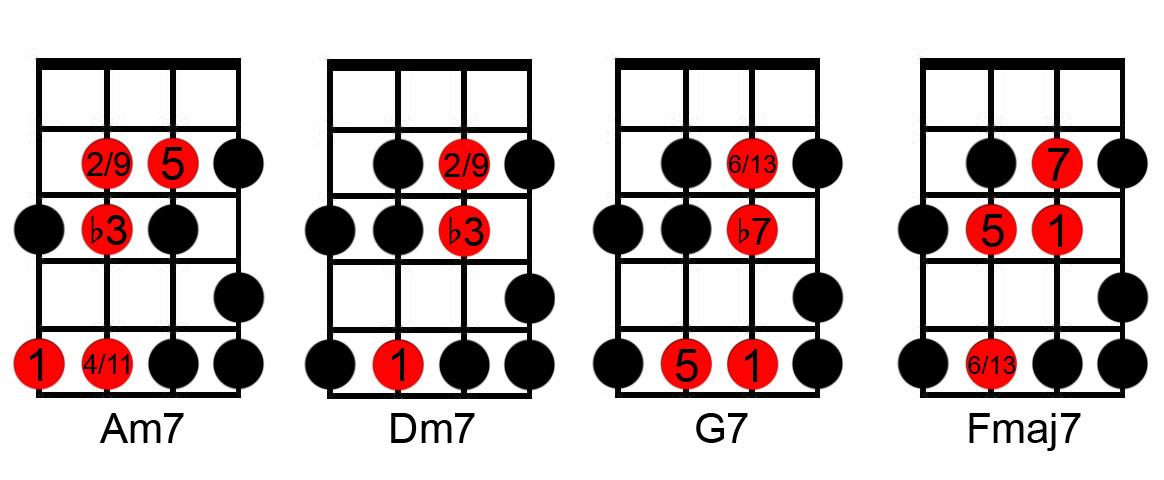
Overlay the chords on top of the Mixolydian scale and you see the chord tones are part of the scale use. As you can see, we added extension tones to the core Major, Dominant and minor chords to help create a more flowing part; all perfectly acceptable.
Just be aware of the following important rule: Melody Is King.
Everything works in service to the melody. So if the part you constructed clashes with the melody - and even the chords that support it - you will need to modify your part to be more tonally consistent with the other instruments, and in particular, the vocal line (melody).
The challenge for you now is to grab some charts and begin to apply these ideas. Just employ a common sense approach and you will find it works very well. Don't try to be overly busy. Strive for relevance over "because I can" application of these ideas - don't be that guy or gal!
None of these lessons are geared to be the "total explanation" of any given technique or approach, application or stylistic interpretation. The purpose is to re enforce that as you transition from advanced beginner into the realm of early intermediate ability, you should be aware of what lies ahead, what things already learned should be either further enhanced or pursued in the course of your study. And you get exposed to things you may not be aware of at all - these point to the future, the kind of thing you should start to pay attention to as you progress.
If you're fairly new to this whole chord use thing, let alone the combining of scales and chords, then stay simple and straight forward. Better to frame the chords and flow with an easy part than try to play things you really don't understand. Take your time to learn the things in this lesson. You can then expand into deeper application of the concepts and slowly begin to integrate them into your normal routine. And remember... have fun!
Next time!